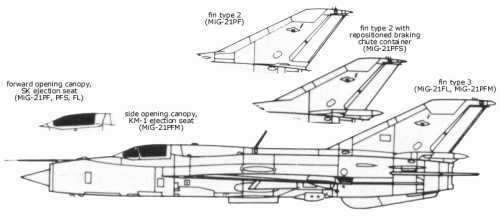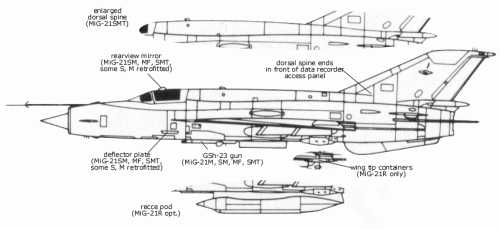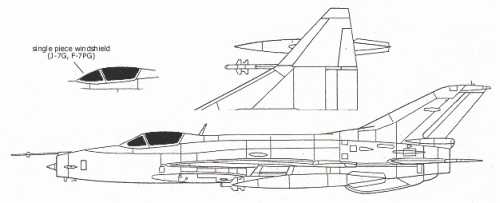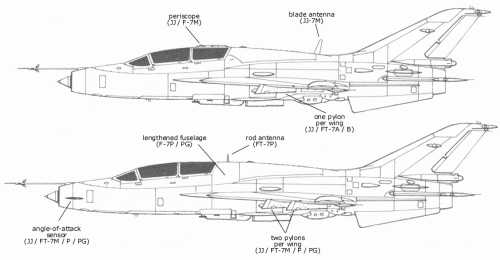MiG-21 — Vikipedi
| MiG-21 | |
|---|---|
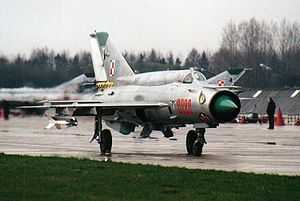 Polonya Hava Kuvvetleri’nin 1. Donanma Avcı Filosu’na ait MiG-21bis. | |
| Türü | Avcı |
| Ulusal köken | Sovyetler Birliği |
| Üretici | Mikoyan-Gurevich OKB |
| Tasarımcı | Artem Mikoyan |
| İlk uçuş | 14 Şubat 1955 (Ye-2) |
| Hizmete giriş | 1959 (MiG-21F) |
| Hizmetten çıkış | 1990’lar (Rusya) |
| Durumu | Faal (listeye bakınız) |
| Ana kullanıcı | Sovyet Sosyalist Cumhuriyetler Birliği (SSCB) |
| Diğer kullanıcılar | Hindistan Romanya Vietnam |
| Üretim aralığı | 1959 (MiG-21F) — 1985 (MiG-21bis) |
| Üretim sayısı | 11,496 (10,645 adet SSCB, 194 adet Çekoslovakya, 657 adet Hindistan) |
| Değişimleri | Chengdu J-7 |
MiG-21 (Rusça: Микоян и Гуревич МиГ-21) (NATO rapor ismi: «Fishbed«), Sovyetler Birliği’nde Mikoyan Gurevich Tasarım Bürosu tarafından tasarlanan ve üretilen süpersonik (sesten hızlı) jet avcı/önleyici uçağıdır.
Uçağın görünüşünün bu ünlü Rus telli müzik aletine benzerliği sebebiyle «balalayka» takma ismini almıştır. Polonyalı (Leh) pilotlar tarafından da gövde şeklinden dolayı ołówek (kalem) olarak isimlendirilmiştir. İlk versiyonları ikinci nesil jet avcı uçağı olarak nitelense de sonraki versiyonları üçüncü nesil jet avcı uçağı olarak kabul edilir. MiG-21, dört kıtada ellinin üzerinde ülke tarafından uçurulmuştur ve ilk uçuşunun üzerinden yarım yüzyıldan fazla süre geçmesine rağmen hala bazı ülkelerde hizmet vermektedir. Bu savaş uçağı, havacılık tarihinin en çok üretilen süpersonik jet uçağı, Kore Savaşı’ndan bu yana en çok üretilen savaş uçağı ve bütün versiyonlarda 1959’dan 1985’e kadar en uzun üretim süresine sahip savaş uçağı olmak üzere bir dizi modern havacılık rekorunu elinde bulundurmaktadır. Her tipten 11,496 adet MiG-21 üretilmiştir.
tr.wikipedia.org
DCS: MiG-21bis
The MiG-21bis is a delta wing, supersonic, fighter-interceptor jet aircraft. Much like the AK-47 became the everyman’s rifle, the MiG-21 has been operated by more than 40 countries worldwide, and has enjoyed the longest production run of any modern jet fighter to date. The MiG-21, in all of its variants, has fought in wars stretching all the way from the Vietnam War in the 1960’s to the modern day Syrian Civil War. Owing to its unique blend of versatility, ruggedness and maintainability, the MiG-21 remains in active service to this very day.
Leatherneck Simulations’ recreation of the MiG-21 is, by far, the most accurate and comprehensive simulation of this supersonic jet fighter to date. The fully simulated systems, interactive cockpit, advanced flight modeling and incredible graphical fidelity come together to create a package that will provide you with the most authentic simulation possible. So strap in, and get ready to experience the rebirth of a legend.
Introduction
The MiG-21bis is a delta wing, supersonic, fighter-interceptor jet aircraft. Much like the AK-47 became the everymans’ rifle, the MiG-21 has been operated by more than 40 countries worldwide, and has enjoyed the longest production run of any modern jet fighter to date. The MiG-21, in all of its’ variants, has fought in wars stretching all the way from the Vietnam War in the 1960’s to the modern day Syrian Civil War. Owing to it’s unique blend of versatility, ruggedness and maintainability, the MiG-21 remains in active service to this very day. Initially designed as a pure-bred interceptor, the MiG-21 has over the years evolved into a hybrid multirole aircraft. In addition to a vast Air-to-Air arsenal, it can effectively employ unguided rockets, bombs and radar-guided missiles to destroy ground or naval targets.
The MiG-21BIS 75AP (МиГ-21бис Изделие 75) was the ultimate development of the MiG-21, fitted with the Tumansky R25-300 turbojet engine and a great number of other advances over previous types. The MiGs’ intended for the Soviet PVO (Air Defense Force) were equipped with the Lazur GCI system (NATO: «Fishbed-L»), while those for the Soviet Air Force were fitted with the Polyot ILS system (NATO: «Fishbed-N»). It’s fitted with instruments and electronic equipment ensuring capability to fly by day and at night, under fair and poor weather conditions. The MiG-21BIS is considered to be a third generation jet fighter. Some 50 countries over four continents have flown the MiG-21, and it still serves many nations half-century after its’ maiden flight. Several firms offer upgrade programs for the MiG-21, designed to bring the aircraft up to modern standards, with greatly upgraded avionics and armament. The DCS: MiG-21bis simulates an aircraft built to the Fishbed-N standard.
MiG-21 Specifications
Crew: 1
Length: 15.0 m (with Pitot) (49 ft 2.5 in)
Wingspan: 7.154 m (23 ft 5.66 in)
Height: 4.125 m (13 ft 6.41 in)
Wing area: 23.0 m2 (247.3 ft2)
Empty weight: 5,339 kg (11,770 lb)
Gross weight: 8,725 kg (19,235 lb)
Powerplant: 1 x Tumansky R25-300, 44 kN static thrust dry, 71 kN static thrust with afterburner
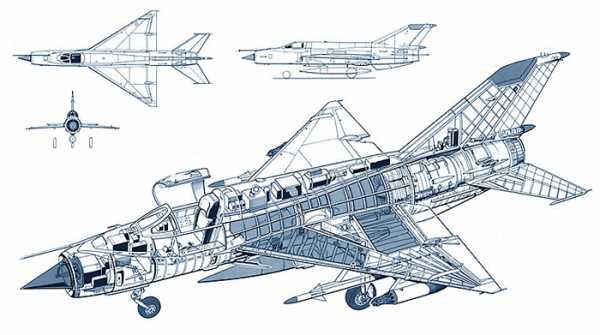
Cockpit
The DCS: MiG-21 comes with a 6 degrees-of-freedom, interactive, clickable cockpit. Detailed meshwork and textures provide the end-user with an immersive cockpit flying experience. DCS World also offers full Oculus Rift support, and the MiG-21 cockpit is no exception.
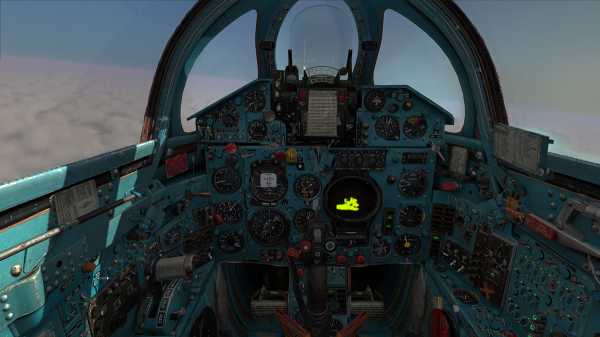
To simplify the mastering of the cockpit and its’ controls, tooltips are provided to the end user in both English and Russian languages.
The cockpit, all text and artwork, has been fully translated from the original Russian labeling to English. Control over which cockpit language you’d like to use is achieved by a setting in the options menu.

Exterior Model
The DCS: MiG-21 exterior model is highly detailed and features high-resolution textures with normal and specular maps. Highly detailed afterburner, exhaust and suspension animations (amongst others) further improve immersion.
Over 10 liveries are provided with the aircraft, ranging from countries such as Egypt to Finland.
A package of pre-compiled photoshop files (.PSD) will be made available after release for easy community livery creation and repainting.

Interactive Training Missions
The DCS: MiG-21 comes with a full suite of interactive training missions that will significantly assist in the learning process of learning this complex aircraft. These training missions are divided into three sections: Basic Training, Navigation, and Weapons Employment.
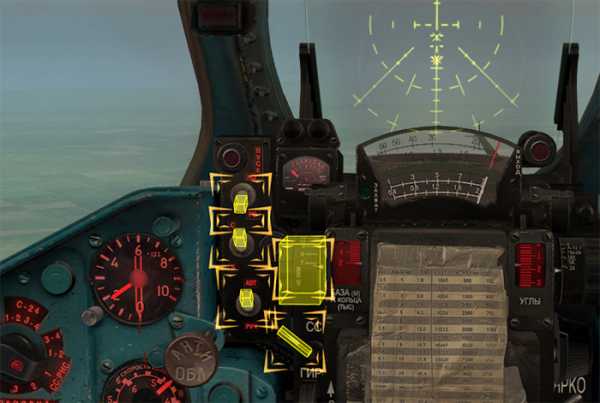
Singleplayer Campaign
The DCS: MiG-21 will come with a comprehensive Singleplayer campaign, featuring two fictional factions and a host of diverse missions and scenarios.
Manual
The DCS: MiG-21bis comes with a full suite of documentation to help you become proficient with the aircraft. The manual weighs in at around 200 pages; and covers every system or function in great detail. Quick-start guides and other reference material (video tutorials) will also be available.
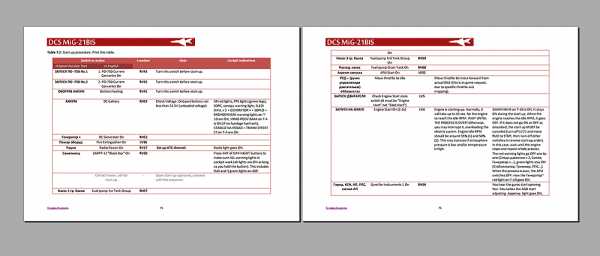
Avionics & Systems Fidelity
The DCS: MiG-21 is designed to from the ground up to faithfully recreate and simulate all interior avionics to their fullest extent. No effort has been spared in making this one of the most complex and accurate flight simulation aircraft available, which is designed to meet the Advanced Systems Modelling («ASM») criteria set forth by Eagle Dynamics.
The DCS: MiG-21 simulates all major and minor avionics and system components found in the Fishbed-N, including, but not limited to:
- ARK-10 Radio Direction Finder
- RSBN-4N Radio Navigation System
- RP-22M «Sapfir» Radar
- SAU Autopilot, including e.g. auto-landing and recovery modes
- NPP and KPP Instruments
- ASP-PDF-M Gunsight
- SARPP Data Recorder
- RSIU-5V Radio
- SRZO-2M «Krom-Nikel» Identify Friend-or-Foe («IFF») System.
- SPO-10 «Sirena 3-M» Radio Warning Receiver («RWR»)

Engine Simulation – Tumansky R25-300
By 1971, Sergey Tumansky’s OKB-300 design bureau had completed work on the new R-25-300 after burning turbojet engine; and what was to be the ultimate development of the R-11. The R-25-300 is a two-spool axial flow turbojet engine, with significant improvements in all performance parameters over its’ predecessors. Take-off thrust, in comparison to latter models, was increased by 2,200 kgp.
A unique specialty of the R-25-300 was the addition of a second, emergency, reheat (afterburner) stage. When activated by the pilot, this stage allows the engine to produce around 100 kN of thrust at Mach 1. Due to the risk of severe engine damage, this mode is limited to three minutes of use in emergency war-time conditions.
The DCS: MiG-21 accurately models and reproduces the performance and unique characteristics of the Tumansky R-25-300 engine. You will have to learn how to take proper care of your power plant, avoiding flight conditions where you risk damaging the engine components or even loosing all thrust. Mid-Air engine re-light attempts are as exciting as ever!
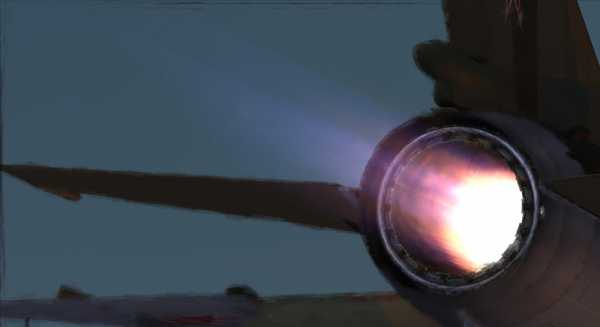
www.digitalcombatsimulator.com
|
Notice: This page is not subject to any update. For updated information please refer to the German pages of this website or the publications by the author. About 20 main and sub versions of the MiG-21 can be divided into four generations. In the following the main features of the several generations are shown. The — often wrong designated - Western code names are subject to a separate list.
Daylight interceptor without radar, armed with guns (one or two 30mm NR-30 respectively), guided or unguided missiles on two wing pylons.
Radar equipped all-weather interceptor, armed with missiles on two wing pylons only, some versions with external GP-9 gun pod (one 23mm two-barrel gun GSh-23).
All-weather interceptor and reconnaissance aircraft with gun and missile (on four wing pylons) armament (one 23mm gun GSh-23, MiG-21S with GP-9 gun pod, MiG-21R with recce pod instead of the gun).
All-weather interceptor with improved air combat performances at low and medium altitudes, engine and airframe completely redesigned.
First, second and third generation of MiG-21 included a twin-seated trainer version. All trainers had two wing pylons only and lacked internal gun and radar.
* unofficial designations
The Chinese MiG-21 copies J-7 (home market) / F-7 (export) can be divided in three generations based on the MiG-21F-13 airframe, a separate development featuring the fuselage of the MiG-21MF as well as a number of twin-seated trainers. Today these types differ in many features from their Soviet predecessors:
Daylight interceptor without radar or with radar range finder, armed with guns (one or two 30mm 30-I respectively), bombs, guided or unguided missiles on two or four wing pylons.
All-weather interceptor with radar, armed with guns (two 30mm 30-I), bombs, guided or unguided missiles on four wing pylons.
All-weather interceptor with upgraded avionics and double-delta wing, armed with guns (one 30mm 30-I), bombs, guided or unguided missiles on four wing pylons.
All-weather interceptor with an airframe similar to the third MiG-21 generation, armed with guns (one 23mm-cannon), bombs, guided or unguided missiles on four wing pylons.
Several variants of twin-seated trainers, some armed with guns (one 23mm-cannon), bombs, guided or unguided missiles on two or four wing pylons, with and without radar.
|
www.mig-21.de
MiG-21 / МиГ-21 / MiG-21 Fishbed | Geschichte / Technik / Einsatz | History / Technical Data / In Service | История / Техника / Применение
| Deutsch | ||||||
| English | ||||||
Letzte Aktualisierung / Last update: 22.06.2019
Impressum / Imprint
www.mig-21.de

